BIO Lab Practical Exam
1/54
Name | Mastery | Learn | Test | Matching | Spaced |
|---|
No study sessions yet.
55 Terms
What is the formula for calculating allele frequencies in a population under Hardy-Weinberg equilibrium?
** p + q = 1 ;
p = frequency of the dominant ;
q = frequency of the recessive allele
What is the formula for calculating genotype frequencies in a population under Hardy-Weinberg equilibrium?
** p^2 + 2pq + q^2 = 1 ;
p^2 = frequency of the homozygous dominant genotype ;
2pq = frequency of the heterozygous genotype ;
q^2 = frequency of the homozygous recessive genotype.
How do you calculate the frequency of the homozygous dominant genotype in a population under Hardy-Weinberg equilibrium?
** p^2 ;
p = frequency of the dominant allele
How do you calculate the frequency of the heterozygous genotype in a population under Hardy-Weinberg equilibrium?
** 2pq ;
p = frequency of the dominant allele
q = frequency of the recessive allele.
How do you calculate the frequency of the homozygous recessive genotype in a population under Hardy-Weinberg equilibrium?
** q^2 ;
q = frequency of the recessive allele.
If the frequency of the recessive allele (q) is 0.2, what is the frequency of the dominant allele (p)?
** 0.8
because p + q = 1, so p = 1 - q.
In a population under Hardy-Weinberg equilibrium, if 16% of the population expresses the recessive phenotype, what percentage of the population is heterozygous?
** 48%
If q^2 = 0.16, then q = 0.4. Using p + q = 1, p = 0.6. The frequency of heterozygotes is 2pq = 2(0.6)(0.4) = 0.48 or 48%.
What are the key components of a plant cell?
Cell wall made of cellulose
Central vacuole that maintains cell pressure and stores compounds
Chloroplasts for photosynthesis
Nucleus that contains genetic material
What is the function of chloroplasts in plant cells?
They are the sites of photosynthesis
They use chlorophyll to absorb light energy
They convert light energy into chemical energy stored in glucose
Describe the role of the central vacuole in plant cells.
They store water and help maintain turgor pressure against the cell wall, to support the plant’s structure
What are the physical defense mechanisms in plants?
Thorns, spines, tough leaves, waxy cuticle on leaves, etc
What are chemical defense mechanisms in plants?
alkaloids, terpenoids, and phenolics to deter herbivores and pathogens; anything can be toxic, reduce digestibility, or deter feeding.
How do cells use the immune response as a defense mechanism?
They releases antibodies by B cells to neutralize pathogens
activate T cells to kill infected cells
and recruite phagocytes to engulf and destroy invaders.
What is RNA interference (RNAi) in cellular defense?
a biological process where RNA molecules inhibit gene expression or translation by neutralizing targeted mRNA molecules;
It’s a mechanism of antiviral defense and gene regulation in eukaryotic cells.
What are the primary functions of roots in plants?
They anchor the plant in the soil, absorb water/minerals, and sometimes store food.
Describe the structure and function of a leaf.
They are the main sites of photosynthesis in plants
They consist of a flattened blade that maximizes light absorption, a petiole that connects the blade to the stem, and a stomata for gas exchange
What is the significance of the stem in plants?
They support the plant
They allow leaves to reach sunlight for photosynthesis
They transport water, nutrients, and sugars between roots and leaves
What are alkaloids, and how do they function as a defense mechanism in plants?
They are nitrogen-containing compounds
They are bitter-tasting and can be toxic to herbivores and insects
Ex: include caffeine, nicotine, and morphine, which deter feeding and can inhibit herbivore metabolism.
Describe the role of tannins in plant defense.
They are polyphenolic compounds that bind to proteins, making them indigestible
They can deter feeding and inhibit the growth of fungi and bacteria.
How do glucosinolates protect plants?
They’re found in plants like mustard and cabbage
They break down into toxic compounds when the plant tissue is damaged. These compounds are deterrents to pests and pathogens.
What are terpenoids, and what roles do they play in plant defense?
They are a large class of organic chemicals derived from five-carbon isoprene units
They have various roles in defense, including deterring herbivores with their strong odors or tastes, attracting predators of herbivores
They act as antimicrobials.
How do thorns and spines function as physical defenses in plants?
Thorns and spines are sharp outgrowths that physically deter herbivores from eating the plant by causing physical injury or discomfort.
What is the role of trichomes in plant defense?
Trichomes are hair-like outgrowths on the plant’s surface that can deter herbivores physically by making the plant harder to eat or chemically by secreting substances that are toxic or repel insects.
Explain how the waxy cuticle serves as a defense mechanism in plants.
waxy cuticle covers the epidermis of leaves and stems
they provide a barrier against water loss, pathogens, and insects
they make the plant surface less palatable and harder to penetrate.
What is the significance of bark in plant defense?
is a physical barrier that protects any physical damage, insect invasion, and disease.
Its thick/tough & can make it difficult for herbivores and pathogens to penetrate the inner tissues.
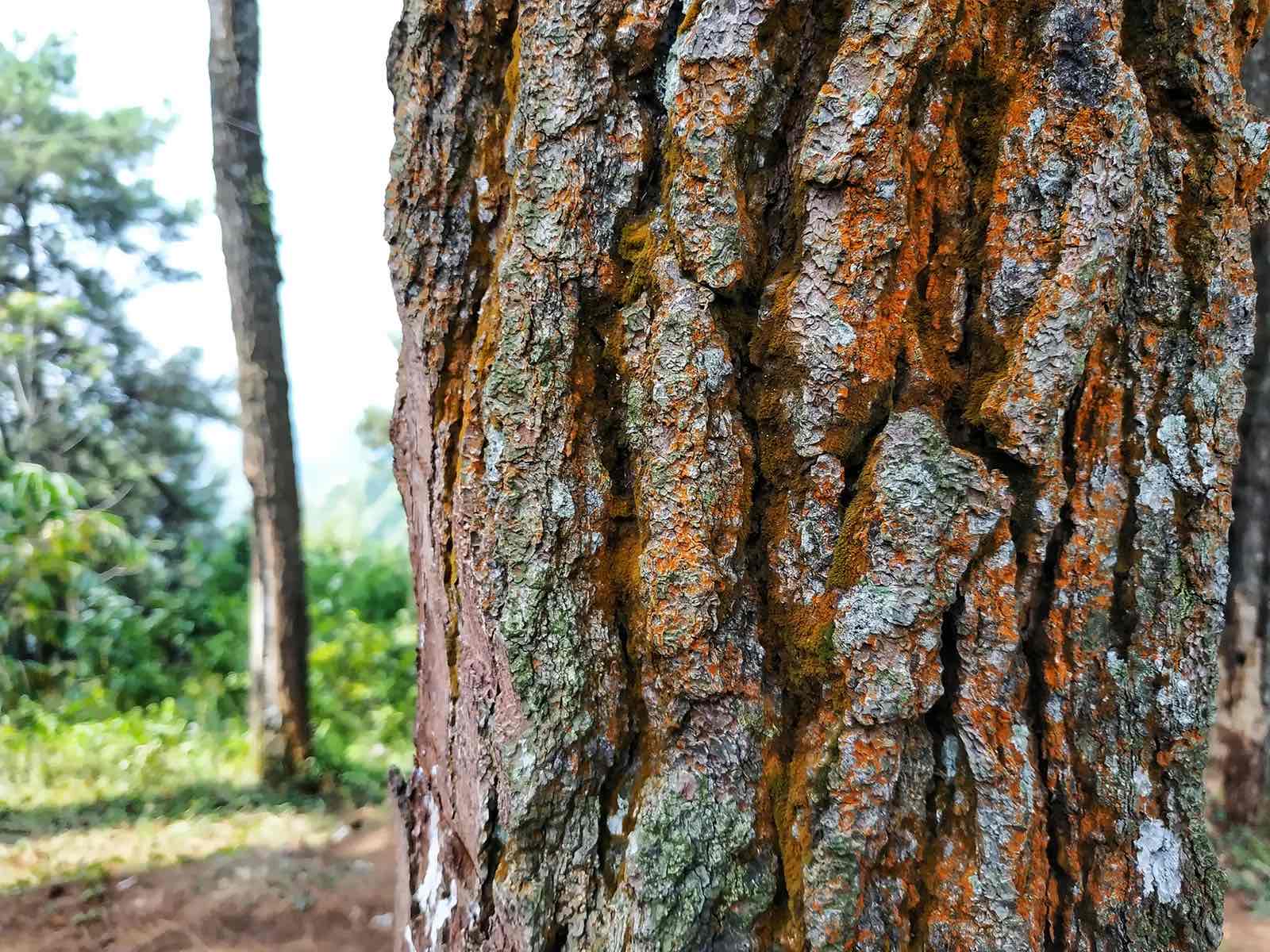
What is a corm and how does it function in plants?
a short, vertical, swollen underground plant stem that serves as a storage organ
It stores nutrients and energy to support the plant’s growth and survival during adverse conditions. Corms can also help in vegetative reproduction.
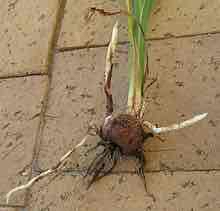
Describe what a tuber is and its role in plants.
an enlarged, fleshy, underground stem or root serving as a storage organ
They store starch and nutrients, ensuring plant survival through winter/dry periods
They also propagate new plants, as seen in potatoes.

What is a bulb and what purpose does it serve in plants?
a rounded, underground storage organ formed from swollen leaf bases (scales) surrounding a central bud at the base of a stem
They store food and energy for the plant, enabling it to survive adverse conditions and regrow annually.
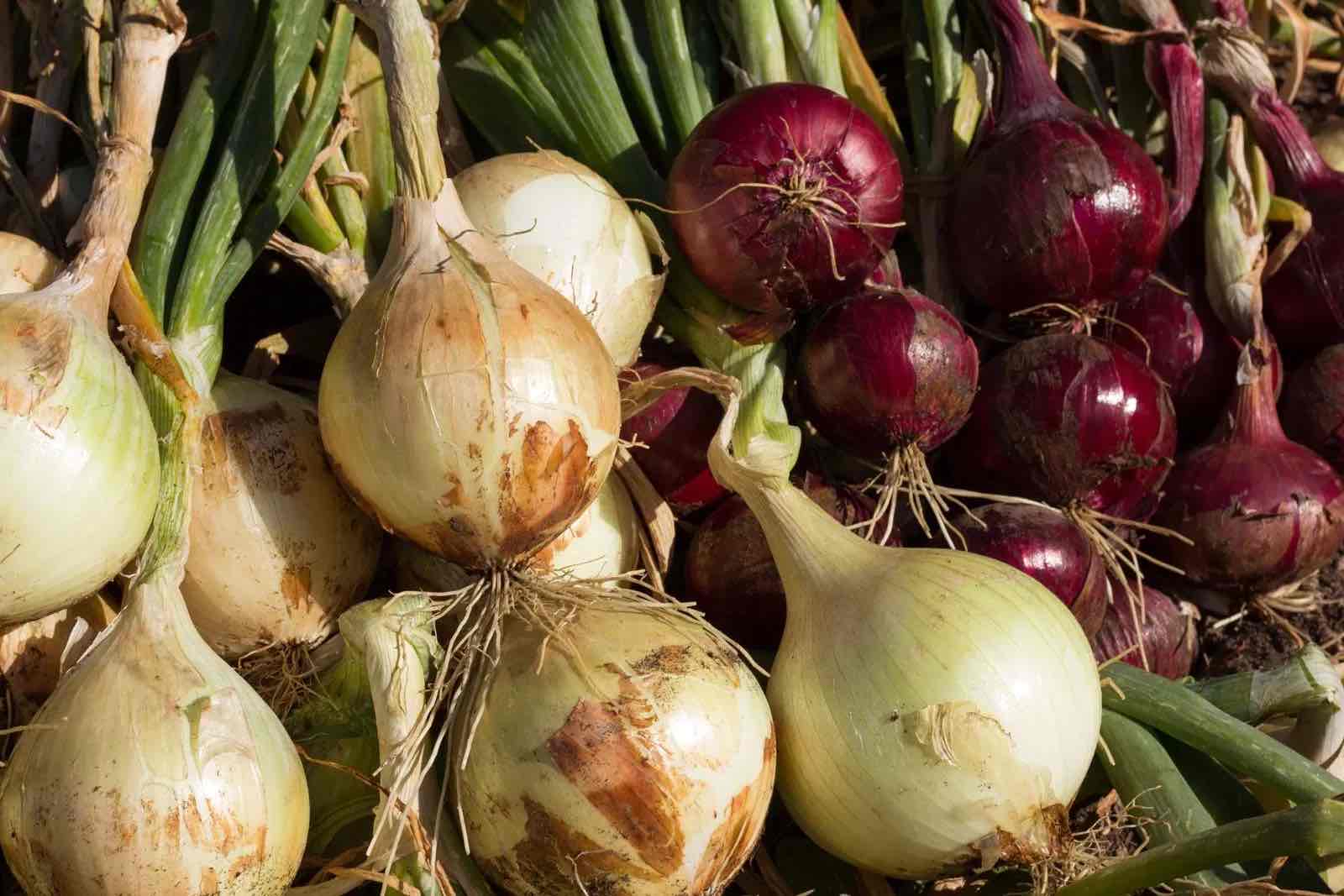
Explain the structure and function of rhizomes in plants.
horizontal, underground stems that grow near the soil surface.
They store starches and proteins and allow for vegetative reproduction. They enable plants to spread horizontally and produce new shoots and roots at their nodes.
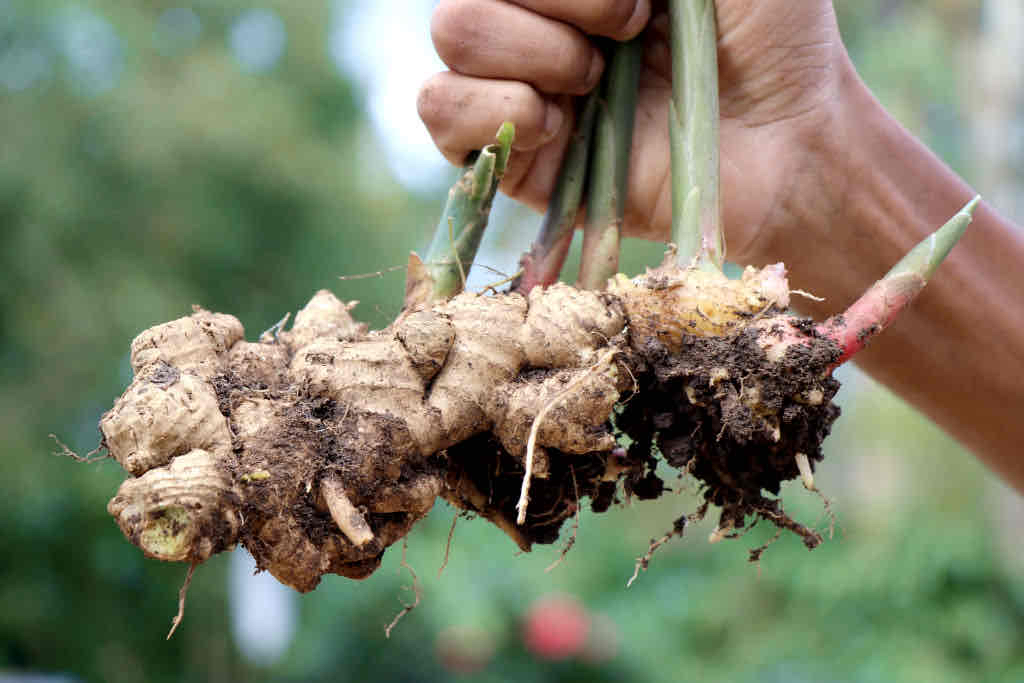
What are stolons, and how do they benefit plants?
aka runners, are above-ground or just below-ground horizontal stems that grow outward from the base of the plant.
They enable a plant to spread and colonize new areas rapidly
They can root at nodes to form new plants.

Define what root tubers are and their significance in plants.
swollen, fleshy roots that store nutrients and energy, similar to stem tubers but originate from roots.
They support plant survival and regrowth. An example is the sweet potato. They also facilitate vegetative reproduction.

How do taproots differ from fibrous roots in terms of structure and function?
-taproots are thick, central, and deep-rooting structures that anchor the plant firmly and store food and nutrients (e.g., carrot).
-fibrous roots form a dense network of thin roots spread out near the soil surface, enhancing nutrient and water absorption.
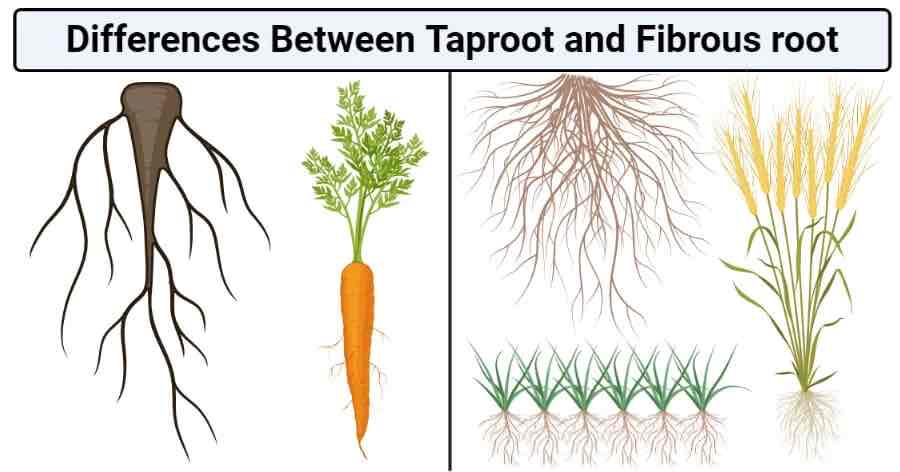
Elodea
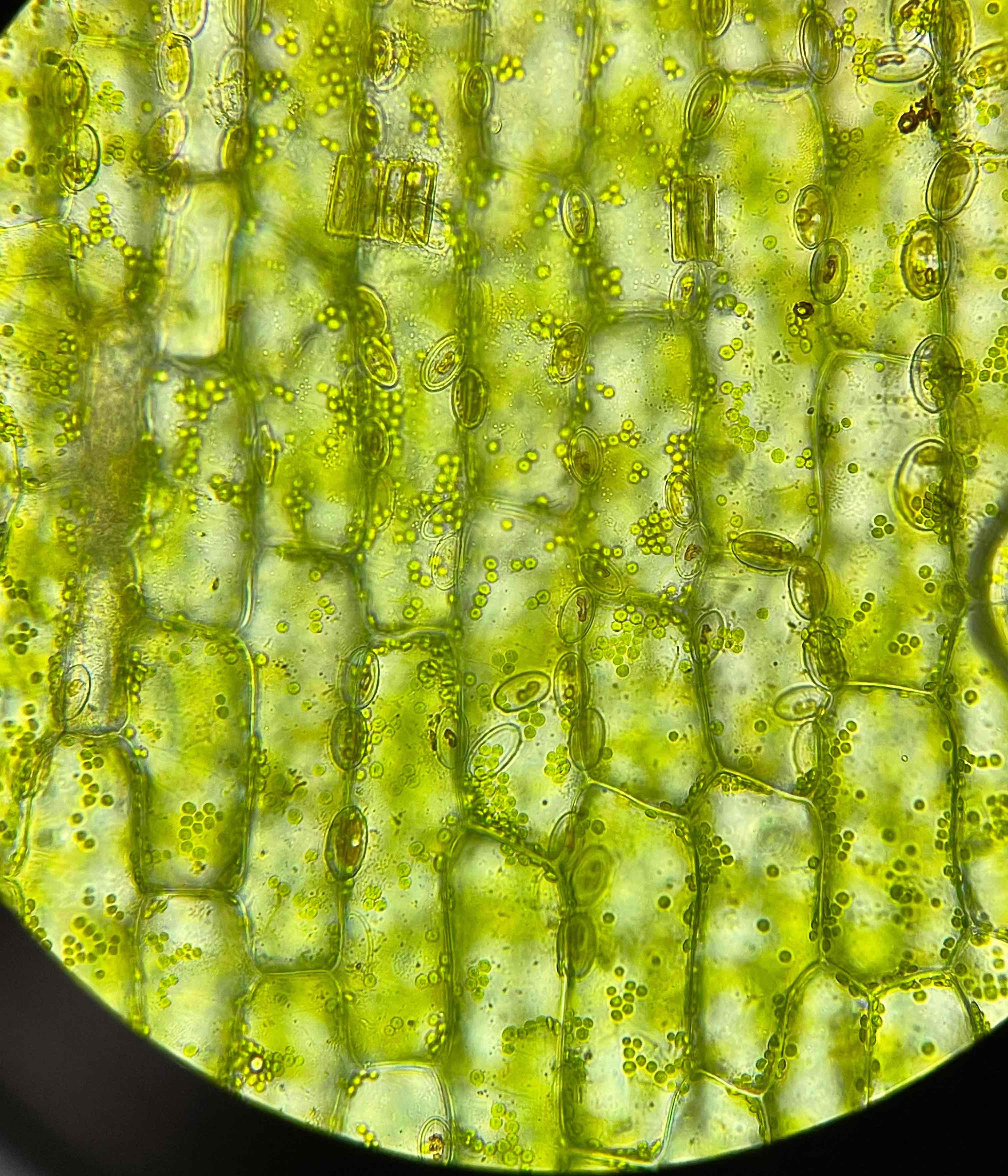
Chromoplasts in Tomato (ricinus communis)

Crystals from stem (calcium oxalate)

Labeled Apical Meristem
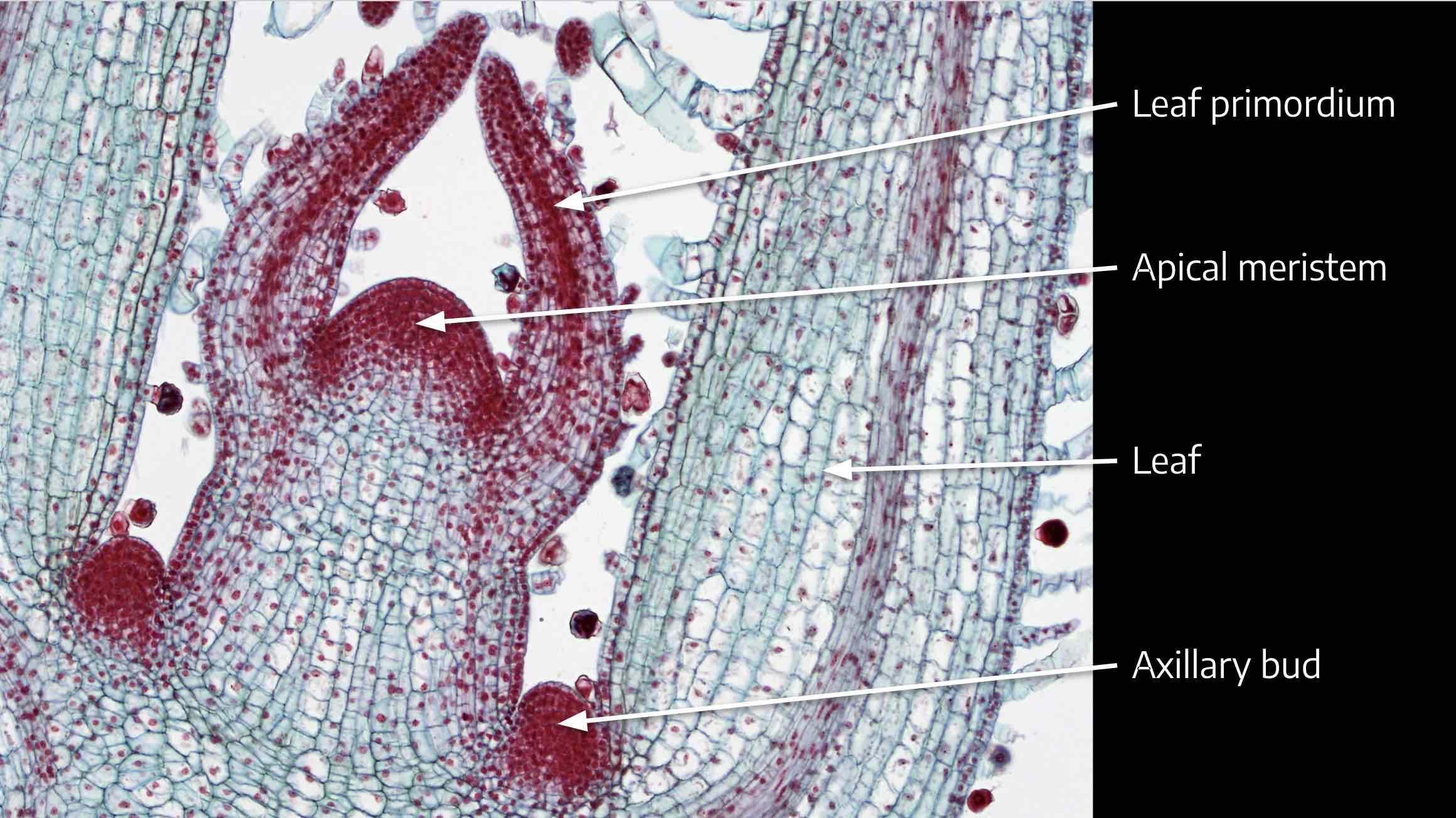
Labeled Coleus Plant

Tilia
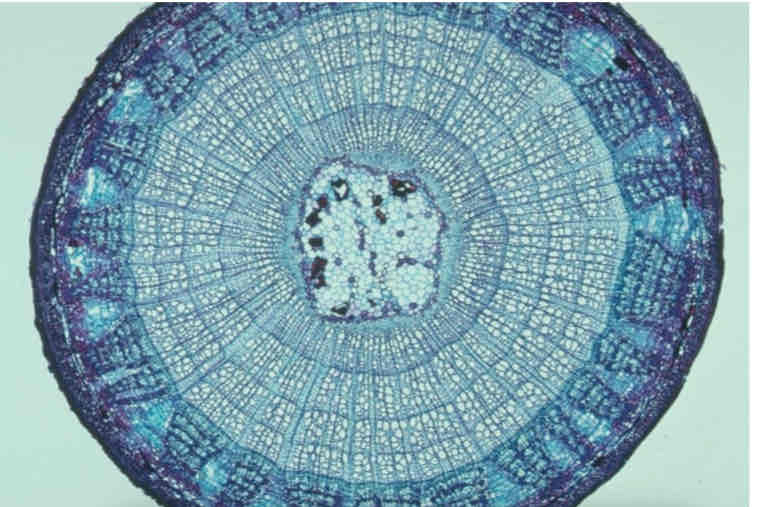
Salix

Rananulus
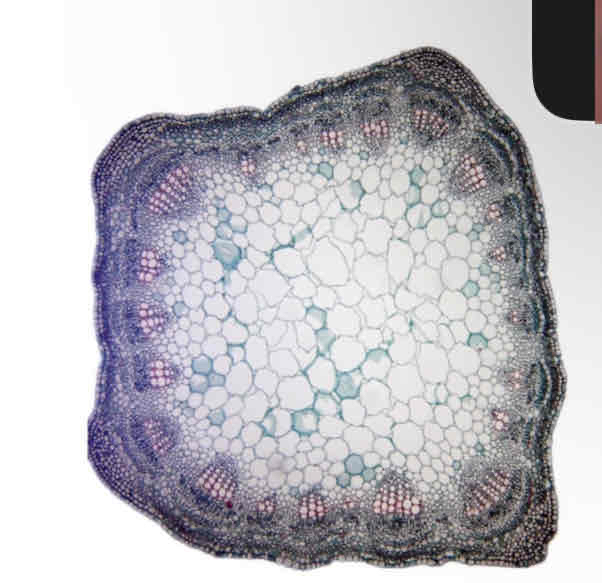
helianthus cs young stem cross section labeled
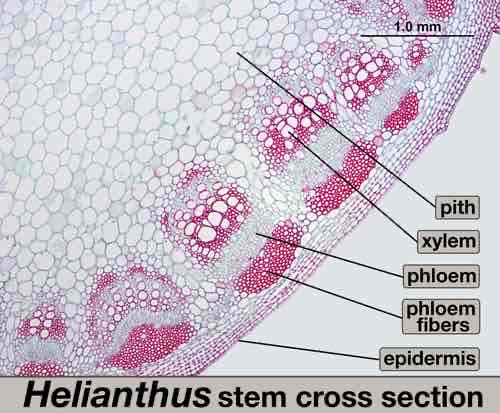
Helianthus stem ls
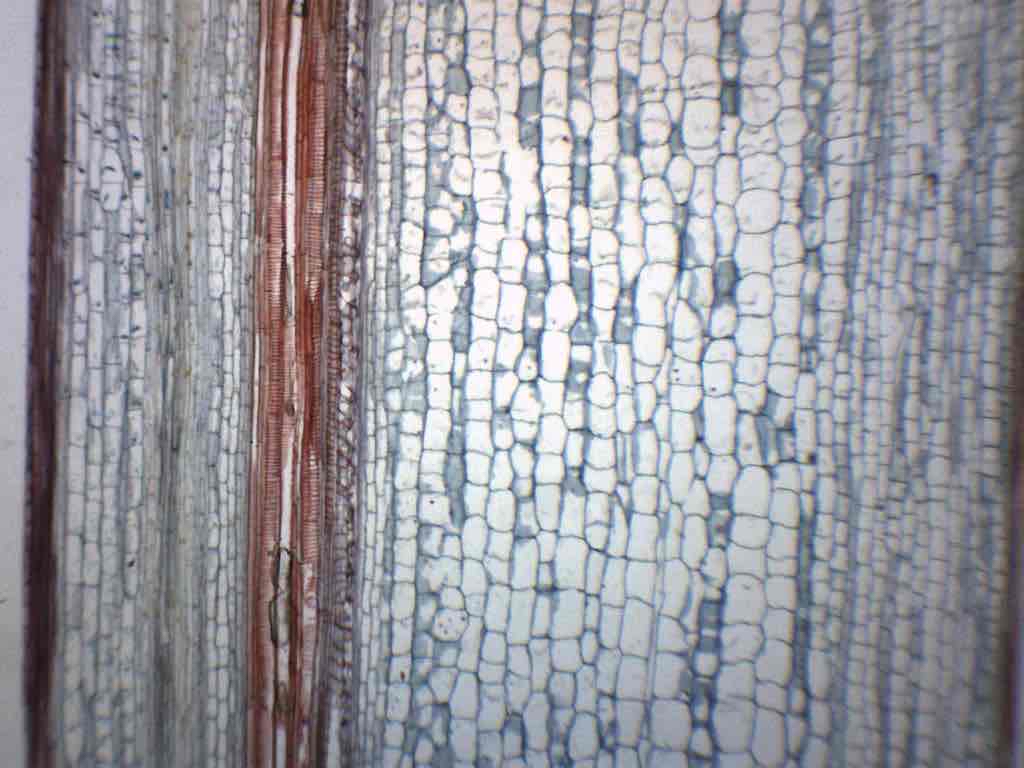
Celery Stalk across Section Labeled
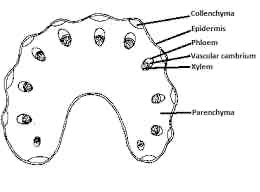
How old is Earth?
4.54 billion years old
What domain of life do humans belong to?
Eukarya - characterized by cells with a nucleus and other organelles enclosed within membranes.
What is compression fossilization?
occurs when organisms are compressed under layers of sediment, leaving a carbon imprint of the organism on the sedimentary layer.
This process typically preserves the flat parts of organisms, such as leaves or flowers.
Describe impression fossilization
is similar to compression but does not include any organic remains, leaving just an imprint or outline of the organism in the rock.
It captures the surface details of organisms, often seen in footprints and leaf impressions.
What is amber fossilization?
involves the preservation of organisms, often small insects or plant material, that get trapped in tree resin.
the resin hardens into amber, perfectly preserving the encapsulated organisms in three-dimensional detail.
Explain petrification.
aka permineralization, occurs when minerals carried by water are deposited around a hard structure, like bone or wood, replacing the organic material with stone while retaining the original structure.
This process can preserve even the microscopic details of the organism.